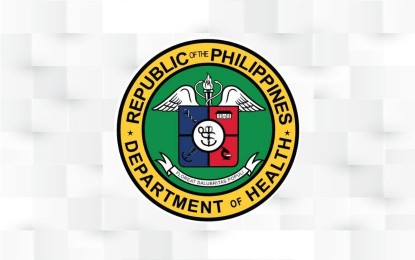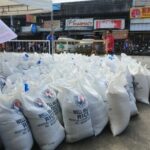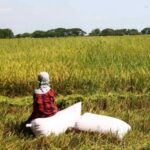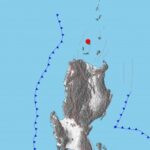MANILA – The Department of Health (DOH) has activated a Code White alert in anticipation of the effects of Tropical Storm Ramil.
“The Department of Health has declared a Code White alert in relation to the expected landfall of Typhoon Ramil this afternoon,” it said.
Under Code White, the DOH will closely monitor its operations center and preposition necessary medicine and medical equipment for rapid emergency response.
Health Emergency Response Teams are ready for immediate deployment to provide immediate assistance to severely hit regions.
The Philippine Atmospheric, Geophysical and Astronomical Services Administration (PAGASA) said Ramil has slightly weakened over the coastal waters of Northern Samar.
As of 1 p.m., Ramil was estimated over the coastal waters of Laoang, Northern Samar, moving westward at 25 kph, with maximum sustained winds of 65 kph near the center and gustiness of up to 90 kph.
The weather bureau forecast Ramil to make landfall over Catanduanes on Saturday afternoon or evening, and over Camarines Sur in the evening or early morning on Sunday.
A slightly southward shift in the forecast track will result in a landfall over Albay or Sorsogon Saturday afternoon or evening.
Based on the forecast track, Ramil will continue moving west-northwestward over the landmass or coastal waters of the Bicol Region between Saturday night and Sunday morning.
Afterwards, it will pass close or over Polillo Islands on Sunday morning, then make a final landfall in the vicinity of Aurora on Sunday morning or afternoon.
PAGASA did not rule out the possibility of landfall over northern Quezon or southern Isabela instead of Aurora.
After making landfall in Aurora, Ramil will traverse the mountainous terrain of Northern Luzon and emerge over the coastal waters of Pangasinan or La Union Sunday evening.
It will exit the Philippine Area of Responsibility on Monday morning.
Based on the latest situation report of the National Disaster Risk Reduction and Management Council (NDRRMC), at least 12 seaports in Calabarzon reported cancelled trips due to the storm, and about 90 passengers were left stranded.
Northern Samar
Northern Samar is a province in the Eastern Visayas region of the Philippines, known for its rugged natural landscapes, extensive cave systems, and significant World War II history. It was a key site during the Battle of Leyte Gulf, where American forces landed in 1944 to liberate the Philippines from Japanese occupation. Today, it remains a region celebrated for its pristine natural beauty and resilient local communities.
Catanduanes
Catanduanes is an island province in the Philippines known as the “Land of the Howling Winds” due to its frequent exposure to typhoons. Historically, it was a former sub-province of Albay before gaining full provincial status in 1945. The island is celebrated for its rugged natural beauty, featuring pristine beaches, surfing spots, and the historic Bato Church.
Camarines Sur
Camarines Sur is a province in the Bicol Region of the Philippines, known for its stunning natural landscapes, including the active Mayon Volcano and beautiful beaches. Historically, it was one of the original six provinces established by the Spanish colonizers in the Philippines in the 16th century. Today, it is also a popular tourist destination, famous for the Caramoan Islands and as a hub for water sports.
Albay
Albay is a province in the Philippines located in the Bicol Region, most famous for its iconic Mayon Volcano. This active stratovolcano is renowned for its near-perfect conical shape and has a long history of eruptions, with the first recorded one dating back to 1616. The province’s history is also deeply tied to Spanish colonial rule, with the city of Legazpi serving as a major trading port and settlement named after the Spanish conquistador Miguel López de Legazpi.
Sorsogon
Sorsogon is a province in the Philippines located at the southernmost tip of Luzon Island. It is renowned for its natural attractions, including the world’s largest fish, the whale shark (Butanding), which can be observed in the coastal town of Donsol. Historically, the area was a major shipbuilding site during the Spanish colonial period and its name is believed to have originated from the Bicol word “solsogon,” meaning “to trace the river.”
Polillo Islands
The Polillo Islands are an archipelago in the Philippines, located off the eastern coast of Luzon in Lamon Bay. Historically, the islands were a significant trading post before Spanish colonization and were later settled by Franciscan missionaries in the 16th century. Today, the islands are known for their pristine beaches, rich marine biodiversity, and lush forests.
Aurora
Aurora is a natural phenomenon characterized by shimmering curtains of colored light in the night sky, primarily seen in high-latitude regions around the Arctic and Antarctic. It is caused by charged particles from the sun colliding with gases in Earth’s atmosphere. Historically, these dazzling displays have inspired numerous myths and legends among indigenous cultures, often seen as spirits or messages from the gods.
Quezon
Quezon is both a province and a city in the Philippines, named after Manuel L. Quezon, the second President of the Philippines. Quezon City was established in 1939 and served as the national capital from 1948 to 1976, playing a central role in the country’s modern political history. The province is also known for the colorful Pahiyas Festival held in Lucban, which celebrates a bountiful harvest.






